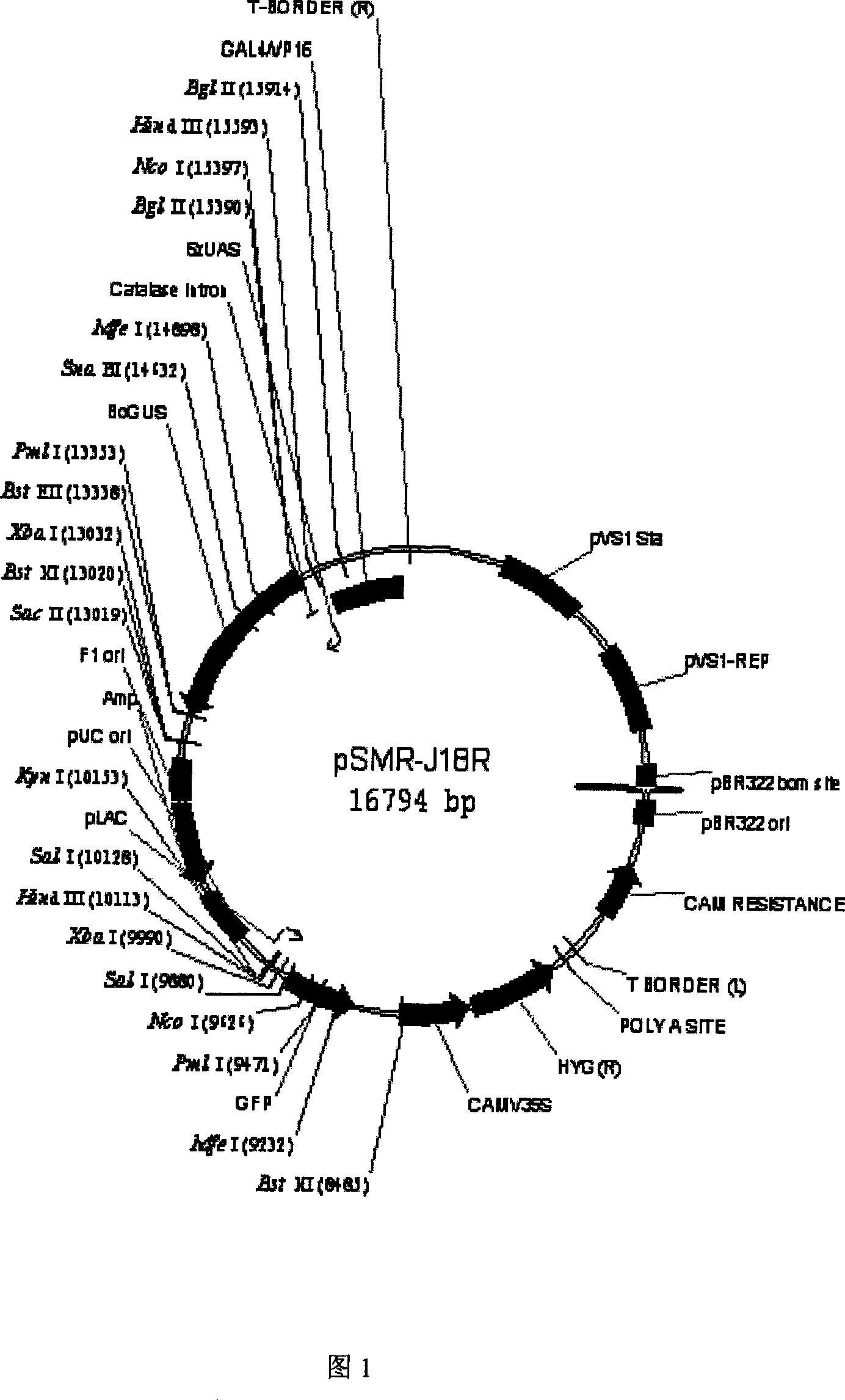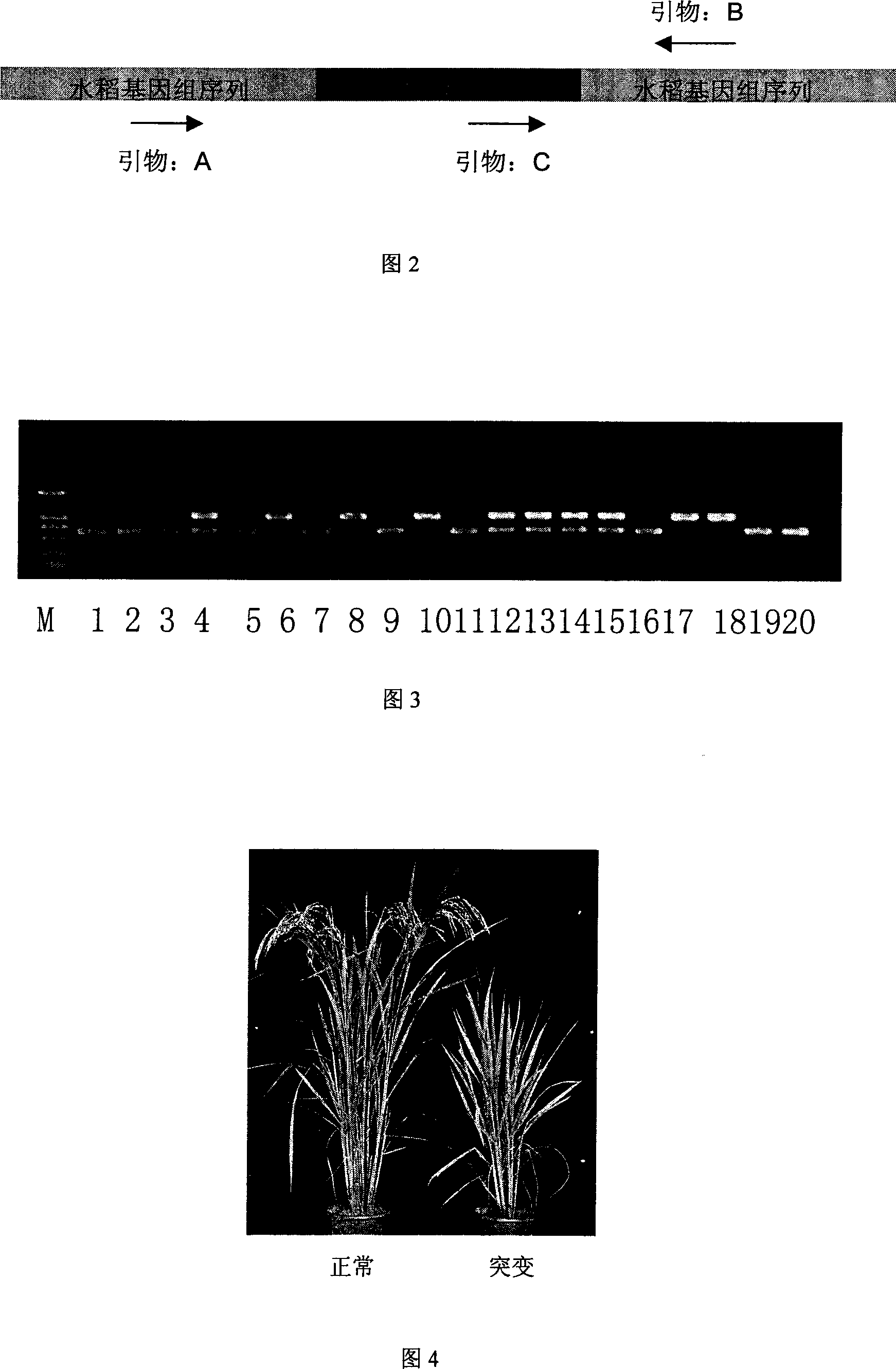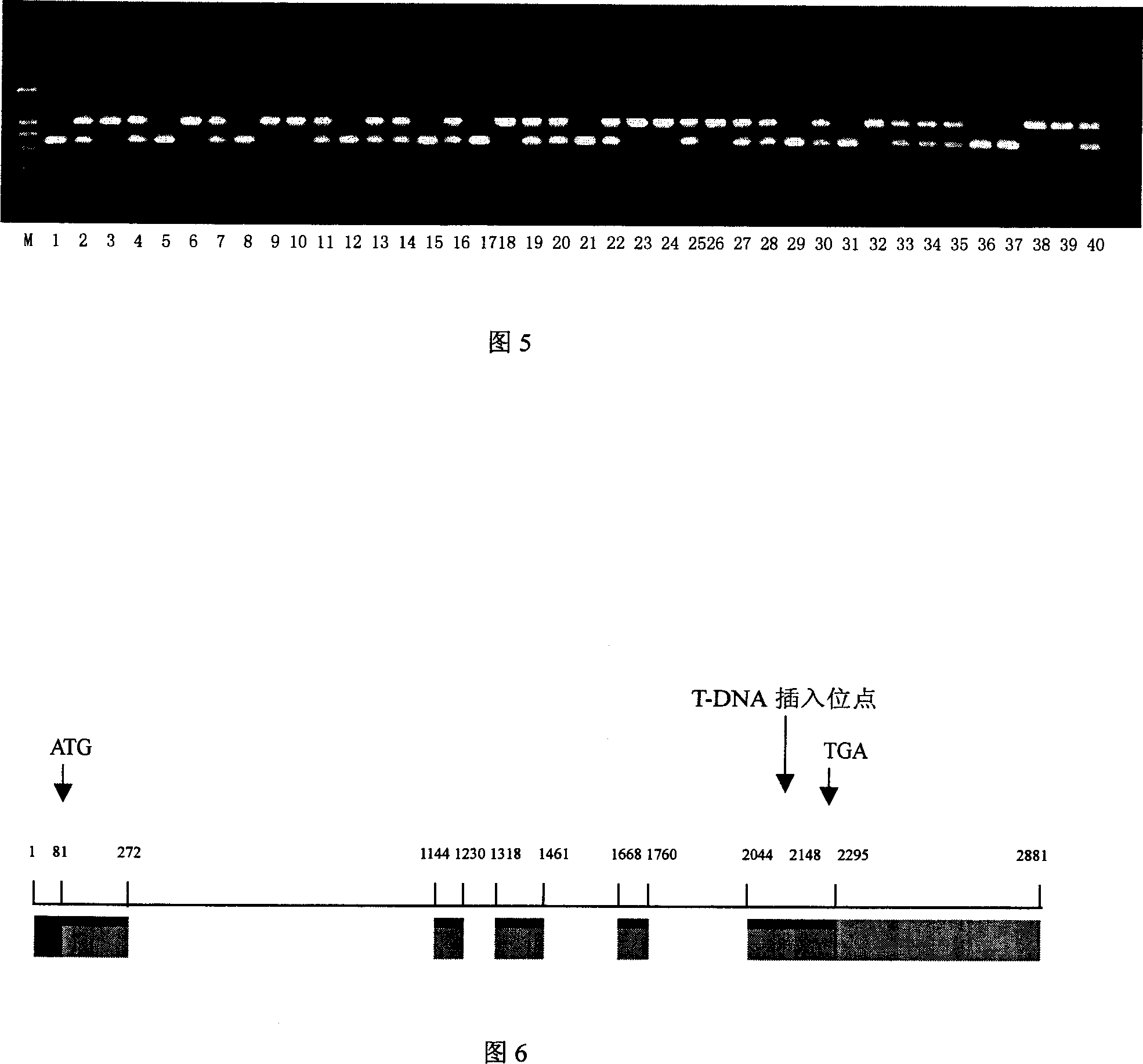Gene for controlling rice ear sprouting period and its uses
A technology of heading date and rice, which is applied in the field of controlling the gene of rice heading date, can solve the problems of time-consuming and labor-intensive, and achieve the effect of high efficiency and fast speed
- Summary
- Abstract
- Description
- Claims
- Application Information
AI Technical Summary
Problems solved by technology
Method used
Image
Examples
Embodiment 1
[0036] Example 1: Isolation and cloning of OsCM2 gene
[0037] 1. Create a mutant library (T0 generation)
[0038] The vector pSMR-J18R used was generously donated by the Australian CAMBIA Laboratory (Center for the Application of Molecular Biology to International Agriculture). As shown in Figure 1, the japonica rice variety Zhonghua 11 (Oryza sativa L. cv.Znonghua 11) Randomly insert T-DNA (including Enhancer Trap) into the genome (Springer P S. Gene Traps: Tools for plant development and genomics. Plant Cell, 2000, 12: 1007-1020) to create a mutant library, mutant library The construction of the plant was constructed according to the method described by Wu et al. (Wu et al., Development of enhancer traplines for functional analysis of the rice genome. Plant J, 2003, 35: 418-427). About 100,000 independent transformants have been obtained so far.
[0039] 2. Field screening of T1 generation tillering traits
[0040] 3000 copies of T1 generation seeds were selected from th...
Embodiment 2
[0081] Example 2: Gene expression analysis
[0082] The mutant obtained in the present invention is caused by the random insertion of T-DNA into the rice genome. The T-DNA contains Enhancer Trap, and the reporter gene on it has a small spliced promoter, which only contains TATAbox and transcription initiation point , is not sufficient to initiate reporter gene expression, but only with the help of adjacent enhancer elements. By detecting the expression pattern of the reporter gene, the expression pattern of the gene controlled by the enhancer element can be judged. The mutant GUS staining results, as shown in Figure 8, are fully expressed in roots, stems, and leaves, which is the same as the expression pattern of the gene in Arabidopsis (Jenny Eberhard et al., Cytosolic and plastidic chorismate mutase isozymes from Arabidopsis thaliaha: molecular characterization and enzymatic properties. Plant Journal, 1996, 10(5): 815-821). This also proved from another angle that the T-...
Embodiment 3
[0083] Example 3: RNAi (RNA interference) conversion verification gene function
[0084] RNAi fragments were designed in the first exon and the last exon of OsCM2 gene. Primer sequences: 1588Si1 5' ggg gac cac ttt gta caa gaa agc tgg gt AAACGGAGATGAAGAAAGATCC 3', 1588Ai1 5' ggg gac aag ttt gta caa aaa agc agg ct GTCACTTTGGAGGACAATGCTG 3', 1588Si2 5' ggg gac cacc ttga gta CTTACCTTGGCGTGCAGAAC 3', 1588Ai2 5' ggg gac aag ttt gta caa aaa agc agg ct GAGCTGTGGAGGATCAGCAG 3'. The total volume of the PCR reaction system is 20 μl, rice genomic DNA template 1ul (about 50ng), 1×Taq enzyme reaction buffer, 25mM MgCL 2 1.2ul, 2mM dNTP 1.5ul, 10uM primer 0.2ul, 50% glycerol 2ul, 0.3 unit rTaq enzyme (Takara company), add ddH 2 0 to 20 μl. The reaction program is: denaturation at 94°C for 3min, 50s at 94°C, 80s at 55°C, 35cycles at 72°C for 90s, extension at 72°C for 5min, 10 tubes for each of the two fragments, and the PCR products were collected and purified in two 1.5ml centrifuge tube...
PUM
 Login to View More
Login to View More Abstract
Description
Claims
Application Information
 Login to View More
Login to View More - R&D
- Intellectual Property
- Life Sciences
- Materials
- Tech Scout
- Unparalleled Data Quality
- Higher Quality Content
- 60% Fewer Hallucinations
Browse by: Latest US Patents, China's latest patents, Technical Efficacy Thesaurus, Application Domain, Technology Topic, Popular Technical Reports.
© 2025 PatSnap. All rights reserved.Legal|Privacy policy|Modern Slavery Act Transparency Statement|Sitemap|About US| Contact US: help@patsnap.com



